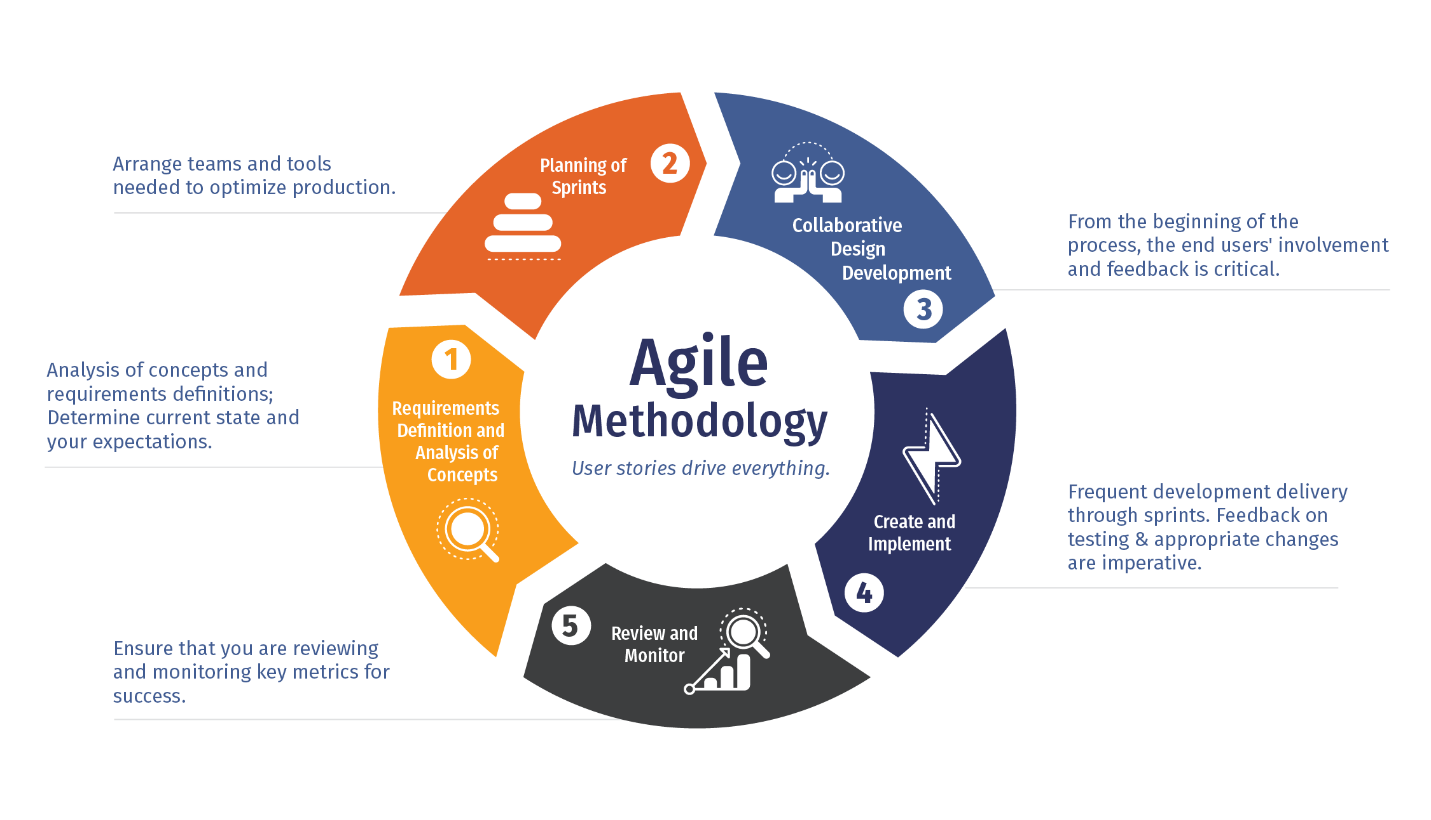It is said that writing a software from requirements and walking on water are quit easy and possible if both requirements and water are frozen, and that wouldn’t always be possible. This is the world in which everything keeps on changing; taking new shapes, new standards, new ideas, and requirements are no different than those things. And since developing a software takes considerably longer time, so one can never be sure that the requirements would be same in future, so one has to apply a methodology for developing software that addresses this situation very well.
Agile software development is a set of software development methods that response well to the change in the requirements, and developers can surely build something better no matter how many times the requirements change with the passage of time. Agile methodology works on this principle that the requirements are incremental i.e. requirements are not finalized before the development starts, rather the developers keep this thing in mind that requirements will be refined as the project moves forward. These improving requirements or incremental cadences are also known as sprints.
Agile methodology first appeared in 1970 in Dr. Winston Royce’s paper entitled “Managing the development of large software systems”, in which Dr. Royce criticized the traditional sequential approach. In sequential approach, the requirements are finalized before you start working on the product, and here is the tough thing: how can one finalize all the requirements of a product without having a single glimpse on the actual product that is yet to built?
The other thing that is followed in sequential approach is that all the components are built separately from the requirements, and in the end they are joined together. So now what if a part fails to adjust itself in that scenario, you may need to adjust all the other parts, and it may take more time and eventually cost you more than you expected.
In Agile methodology, a minimum viable product or MVP is built from the requirements in the first phase. The minimum viable product needs not to be perfect, and it is built merely for the purpose that how would an actual product behave in future. This MVP is evaluated over a specified period, and feedback is gathered from the clients. The further requirements take an impact from the feedback, and serve to make a great product, and this thing wouldn’t be possible if sequential methodology was used where a product is only evaluated after it is totally built.
Here are a few of the agile principles that make it a strong candidate for choosing it as a software development methodology:
- Customer sees the product right from the early stage, and it becomes easy for him to shape the product in the right way right from the beginning.
- The product is built and delivered regularly, giving customer a chance to anticipate what he would get at the end.
- Changing requirements are always welcome, even in the last part of development.
- Project is evaluated directly by the users, and feedback is gathered and analyzed.
So if one wants to adopt a methodology that welcomes changing requirements, promises to give a better product in less time and low cost, Agile methodology is surely the number one choice in that regard.





